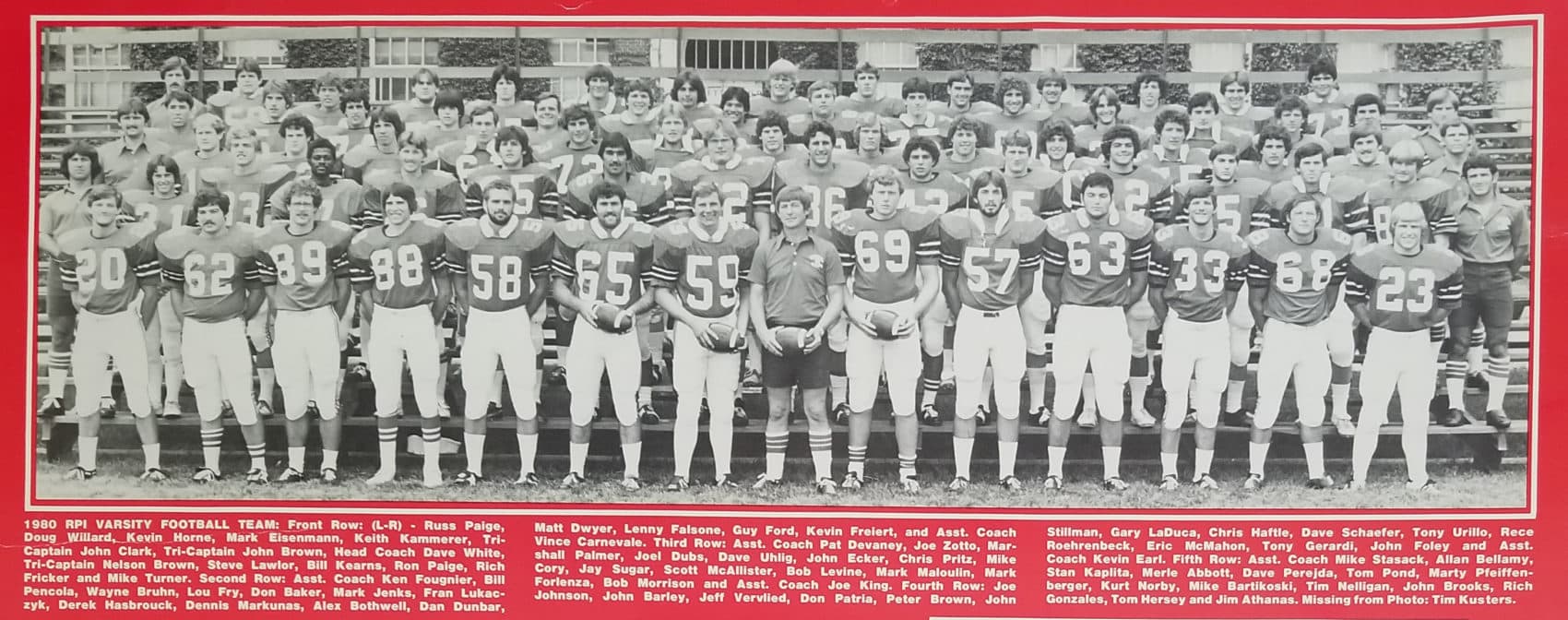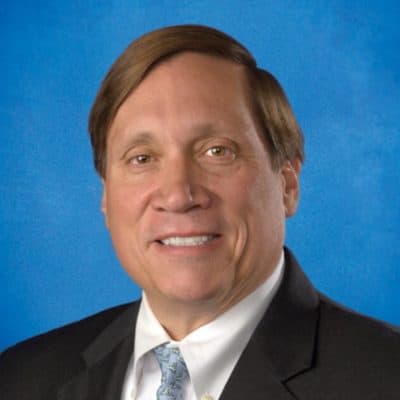Advertisement
Mass. Businessman Charged In College Admissions Case Has A Resume On LinkedIn. So We Fact-Checked It

John Wilson allegedly faked his son's prowess as a water polo player to secure admission to the University of Southern California. According to the FBI, he later tried to pass off one daughter as a competitive sailor to get her into Stanford, and attempted to present another daughter as an athletic recruit to Harvard.
Wilson's alleged acts led the Hyannis Port resident and former Staples executive to be charged this week in a sprawling, college-admissions scandal.
It turns out that Wilson's own athletic exploits may have been exaggerated, too, and Wilson also may have inflated some professional accomplishments.
The FBI alleges that Wilson used a college counselor as an intermediary to bribe the USC men's water polo coach, who facilitated the admission of Wilson's son by falsely telling a university administrator that the teen could swim 50 yards in just 20 seconds and "would be the fastest player on our team."
When Wilson's son arrived at USC in the fall of 2014, his official bio on the Trojans' roster claimed that "his father John played football at RPI" — Rensselaer Polytechnic Institute.
Yet Wilson's name does not appear on RPI football rosters between 1977 and 1980, the four seasons in which he was a student at the school.
"I have no memory of a John Wilson on our team," said Al Bothwell, RPI's leading rusher in 1980.
Bothwell said he asked four former teammates about Wilson, "and no one recognized the name."

Wilson also makes some dubious claims about his business record on a lengthy resume posted on the professional networking site LinkedIn. For example, he says that as Staples' chief financial officer from November 1992 to September 1996, he "grew total sales nearly 10X over 3.5 years from $450 mil. to $4+ bil." and "improved net income by 800%."
A securities filing shows that Staples' sales were, indeed, roughly $4 billion during the fiscal year that ended Feb. 1, 1997, a period that covered the end of Wilson's first stint at the company. (He returned in 2012.) But the growth was not as dramatic as Wilson claims. Sales for the fiscal year that ended Jan. 30, 1993 — a period that covered Wilson's first few months at Staples but mostly predated him — were about $1 billion.
In short, sales quadrupled during Wilson's tenure but did not come close to the "10X" growth he touts.
Over the same period, net income increased by 481 percent, according to the securities filing, not 800 percent.
Advertisement
Wilson did not respond to an interview request. WBUR reached out to several of Wilson's former colleagues, none of whom agreed to speak on the record.
Wilson claims in his online resume that his success at Staples led him to be "selected by CFO magazine in 1994 as one of the Top 50 CFOs in the United States." The magazine's editor-in-chief, Vincent Ryan, was unable to find any record of Wilson's recognition in the publication's archive.
"I can't even verify that we actually did a top 50 CFOs that year or ever," Ryan said in an email, though he noted that "a couple of issues" are missing from the archive, meaning it is possible that Wilson received the accolade.
After leaving Staples, Wilson joined The Gap as an executive vice president. He claims to have "led Old Navy mega expansion from eight store test concept to 800 stores in four years."
In reality, according to a securities filing, Gap already operated 139 Old Navy stores by March 25, 1996 — six months before Wilson joined the company. In a filing at the time of Wilson's departure in April 2000, Gap reported that its most recent tally of Old Navy stores, conducted five weeks earlier, came to 530.
Old Navy grew considerably on Wilson's watch, but the brand was hardly an "eight store test concept" when he arrived and was far short of 800 locations when he left.
Wilson also boasts that Gap's "stock price increased 750+%" during his tenure, but the figure is an overstatement, according to historical data maintained by Yahoo Finance.
The precise date of Wilson's first day at Gap is unclear, but it was sometime in October 1996, according to a securities filing. The lowest that Gap stock traded that month was $7.70 per share. The highest it traded during Wilson's time at Gap was $53.75 on Feb. 4, 2000.
Measuring from these extremes, the price increase was 598 percent. Using the highest and lowest closing prices and adjusting for stock splits, the increase was 567 percent.
Other impressive claims by Wilson check out. He did graduate magna cum laude from Rensselaer in 1981 and did earn an MBA from Harvard Business School two years later. And he is, in fact, a licensed pilot.
Some claims are subjective. On his website, Wilson describes himself as an "accomplished ballroom dancer" and "talented artist."
This article was originally published on March 14, 2019.
This segment aired on March 15, 2019.
